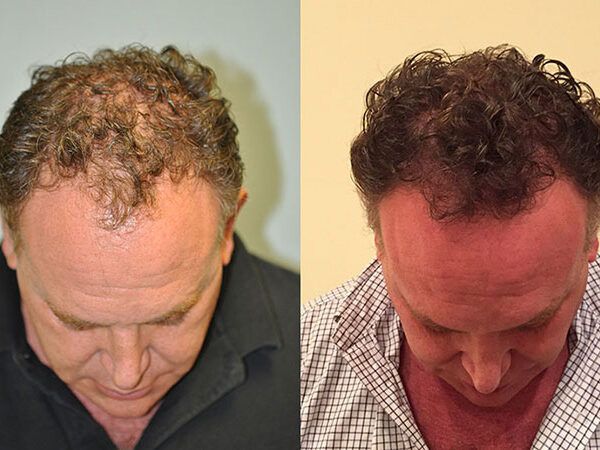Preparing for Procedure

Preparing for a Hair Restoration Procedure
Be Ready for Your Visit to Our Office
Your life-changing hair restoration treatment begins the day you arrive for your first consultation at the Lieberman & Parikh Center for Hair Restoration. Dr. David Lieberman or Dr. Sachin Parikh will help determine the scope of your hair loss, its possible causes, and the ideal course of action. Our staff will work with you in the following days to be sure you understand the nature of your treatment and what you can do to prepare for your procedure. Find out where to stay and what to do during your visit here.
Experience shows that the patients who prepare by getting facts, taking care of their health, and setting up aftercare in advance of their procedure enjoy the results of their efforts, including peace of mind and fewer complications.
Every Hair Restoration Begins With Knowledge
The Lieberman & Parikh Center for Hair Restoration team aims to equip patients with the facts they need to know about their own hair loss and their chosen treatment. This includes classifying their hair loss, understanding the life of a follicle, and exploring the most common causes of hair loss for men and women. Patients are also encouraged to familiarize themselves with the doctors: David Lieberman, MD, and Sachin Parikh, MD.
What to Avoid Before Your Hair Restoration Procedure
While many of the advanced techniques used at the Lieberman & Parikh Center for Hair Restoration are less invasive than other surgeries, they still involve methods that will cause some bleeding. Patients are advised to cut back on anything that may increase the risk of bleeding or limit healing at least a week before their scheduled procedure.
This may include:
- Advil, ibuprofen, and similar medications
- Alcohol intake
- Any medications that reduce the ability to form a blood clot such as Coumadin, Plavix, and aspirin (if medically appropriate)
Talk to your primary care physician about any daily or regular medications you are required to take and how they may interact with your hair restoration plans. Your continued health and safety is most important, but a delayed or otherwise altered schedule may be possible.
Patients who don’t smoke or who stop smoking for at least two weeks before their hair restoration can have improved healing due to well-oxygenated blood and improved blood flow.
Patients will receive a more detailed list from their doctor explaining what to avoid in the days and hours preceding a procedure in order to minimize risks and complications and maximize the aesthetic outcome.
What to Do Before Your Hair Restoration Procedure
Many patients find that increasing their vitamin C intake a few days in advance of their hair restoration appointment boosts their body’s healing strength, promoting quicker recovery.
Since hair restoration via FUE involves numbing the scalp, and some patients elect to use pain medication as well, setting up a ride home ahead of time is imperative, and lining up a responsible adult to stay overnight is recommended.
Patients who work also typically arrange for seven to 10 days off from their jobs to allow ample time for recovery and rest, as well as for most obvious signs of a recent hair restoration procedure to fade.
Why Two Surgeons Are Better Than One
“We use each other as a sounding board in every procedure which creates a confidence level that every step is the best possible decision for the patient.”
How to Wear Your Hair Prior to Hair Restoration via FUE
Follicular unit extraction requires that patients have the back and sides of their hair cut very closely to the scalp. For men, this typically means shaving with the razor at a No. 1 or 0 setting. While the Lieberman & Parikh Center for Hair Restoration team will cut your hair on the morning of your appointment, we recommend that male patients “try on” a shorter haircut for the back and sides about one week before coming in. While short hair is necessary for an FUE, it also gives the patient and those around him some time to get used to a new hairstyle so that a close-cropped scalp does not comes as a shock immediately after the procedure.
For women, the doctors use existing hair to cover thin strips shaved into the donor sites, so female FUE patients are encouraged to grow their hair out as long as possible and wear it in a style with the procedure in mind.
Preparing for Life With New Hair
Preparation for a hair restoration procedure should include familiarizing yourself with what will come immediately after. While you will receive specific care instructions that should be followed, know that you should generally plan on taking antibiotics and other medications to help with healing, sleeping with your head elevated for about a week, refraining from strenuous physical activity for the same amount of time, avoiding vigorous hair washing for several days, and scheduling appointments for follow-up care with the doctors.

Getting More Answers
One of the best ways to prepare for a hair restoration procedure is to be informed. Learn more on our Frequently Asked Questions page, and be sure to familiarize yourself with the available hair restoration procedures and treatments throughout our website.
